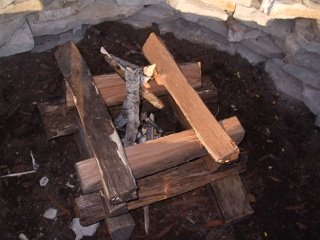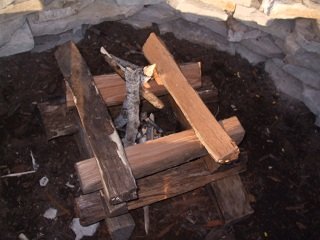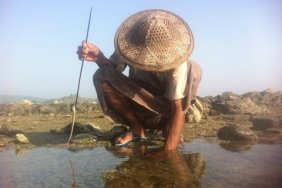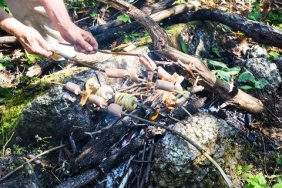 A solid, steady campfire is often the best way to end a day on the trail, and can even be a lifesaver in some situations. You do, however, need to get it started first, which requires constructing a sturdy design. Today, I’ll detail the two most common fire setups—the tepee and the cabin—and by the time you’re done reading, you’ll want to head outside and practice in the backyard.
A solid, steady campfire is often the best way to end a day on the trail, and can even be a lifesaver in some situations. You do, however, need to get it started first, which requires constructing a sturdy design. Today, I’ll detail the two most common fire setups—the tepee and the cabin—and by the time you’re done reading, you’ll want to head outside and practice in the backyard.
Now before you begin building your fire, you’ll need to collect plenty of kindling, which will serve as the fire’s core. Items such as dry tree bark, pine cones, small sticks, and dry grass are all great kindling, but you’ll need to make sure you have plenty of it, as it will need to burn long enough for the firewood to catch the flames. If available, you can also twist newspaper into long pieces and add them to the kindling.
To build a tepee fire, you’ll need several lengths of wood that can be leaned against each other vertically. Stand one of them upright and lean another directly into it so that the tops are touching. Then, take two more and lean them in the same fashion so that you have four pieces that make a tepee. The important thing to remember with this setup is that you need to leave gaps between the vertical pieces of wood so the fire can breathe and stay lit. As the fire burns, and the wood burns down, simply continue to add logs to the frame, two at a time. Also, if you can, try to find forked pieces of wood, as the “V” shape in one end makes a great cradle for the opposing log, which makes the build much sturdier.
The cabin method is, as it sounds, basically a log cabin. Start with two pieces of wood and lay them parallel to each other on the ground. Then, place two more pieces of wood parallel to each other, on top of the ends of the original pieces. Continue this construction to complete the cabin fire. Inside the frame, you’ll need to place your kindling pile. At the top of the frame, it’s a good idea to cross a log, in order to catch the flame as the fire burns.
Separately, the two designs are extremely effective and will serve as long-lasting sources of heat and light. However, some campers also combine the two, constructing a cabin frame around a tepee frame. This tactic creates a fire that will last a very long time, for those situations that require a lengthy stay, or if you’re camping with a lot of people.
Whichever style you choose to create, be sure to take measures against disturbing too much of the ecosystem or damaging local flora. Also, try not to make a fire so big that you can’t control it or that it has the potential to ignite the surrounding foliage. These techniques have proven to be effective throughout the years and all it takes to build them is a little bit of kindling, some firewood, and, of course, a flame.








